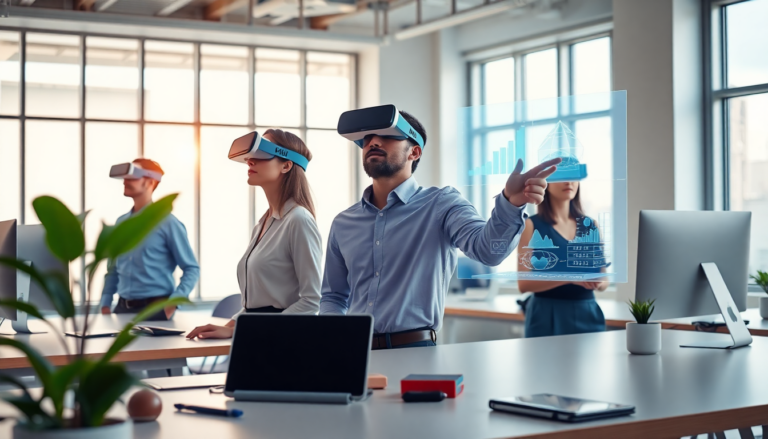Argomenti trattati
Augmented Reality (AR) and Virtual Reality (VR) technologies are not just buzzwords anymore; they’re becoming essential tools across various sectors. Looking ahead to 2031, analysts forecast that the global market value for these technologies will skyrocket from around $30 billion in 2022 to more than $520 billion. This explosive growth is fueled by an expanding range of practical applications and user-friendly innovations. Isn’t it exciting to think about what this means for our everyday lives?
The Current State and Future Potential of AR and VR
The journey of AR and VR began in the 1960s, but it wasn’t until the last decade that these technologies became widely accessible. Iconic products like Google Glass, Pokémon Go, Microsoft HoloLens, and the much-anticipated Apple Vision Pro mixed reality headset are paving the way for their everyday use. As these technologies become more normalized, it’s crucial to consider their trajectory and the exciting advancements on the horizon.
Experts are pinpointing five critical areas that promise significant growth. First up, the integration of AI is taking AR and VR capabilities to new heights, enhancing rendering, tracking, and processing speeds. This is especially impactful in the gaming world, where realism is king. Just imagine more lifelike characters and immersive worlds—how much richer could our gaming experiences become?
Next, the healthcare sector stands to gain immensely. With AI-driven simulations, medical students can practice realistic procedures, fostering a hands-on learning environment without the associated risks. These technologies also promise engaging educational experiences across various fields—could this be the future of learning?
In the U.S., the market for digital avatars has already captured over 82% of the revenue share, showcasing a strong interest in blending physical and digital realms. With AR glasses and smartphone applications, users can seamlessly integrate interactive elements into their real-world environments. Retailers are starting to embrace this trend, using AR to provide personalized shopping experiences through virtual assistants. Isn’t it fascinating how shopping could evolve?
Technological Innovations Driving AR and VR Forward
The advent of 5G technology is another game changer for AR and VR experiences. With lightning-fast connections, split rendering capabilities will minimize latency and maximize data throughput. This means real-time customer service, live product demos, and collaborative design projects could soon become the norm. Are you ready for that level of interaction?
Moreover, the rise of WebAR is simplifying access to advanced AR experiences. Users can now engage with AR content directly through their browsers, eliminating the need for specific applications. This shift enhances compatibility across devices and operating systems, creating a more seamless user experience. Who wouldn’t appreciate that kind of convenience?
As AR and VR technologies become increasingly integrated into wearables like smart glasses and headsets, the market is primed for expansion. However, user comfort remains a concern, as highlighted by feedback on the Apple Vision Pro. Continuous innovation will be essential to address these issues and enhance user satisfaction. What would it take for you to feel comfortable using these technologies?
Challenges and Ethical Considerations Ahead
Despite the promising future, challenges persist. Accessibility is a significant hurdle, and the industry must ensure these technologies are usable for everyone. While WebAR contributes to this goal, broader solutions are necessary to make AR and VR truly inclusive. How can we bridge this gap?
On a practical level, prolonged use of AR and VR can lead to health issues such as eye strain and headaches. Addressing these concerns is essential as technology evolves. Additionally, the high costs associated with AR and VR devices, along with limitations like battery life and field of view, need to be tackled to encourage wider adoption. What changes would make you consider investing in these technologies?
Ethical issues are also coming to the forefront as awareness of AR and VR technology grows. Users are increasingly concerned about data privacy, cybercrime, and invasive advertising. Companies developing these technologies must prioritize transparency about their data protection practices to build trust among users. What steps do you think companies should take?
By the end of this decade, AR and VR are set to become integral parts of our daily lives, allowing us to interact in 3D rather than 2D. Organizations that harness these trends now will position themselves as market leaders. Are you ready to embrace this transformation?

